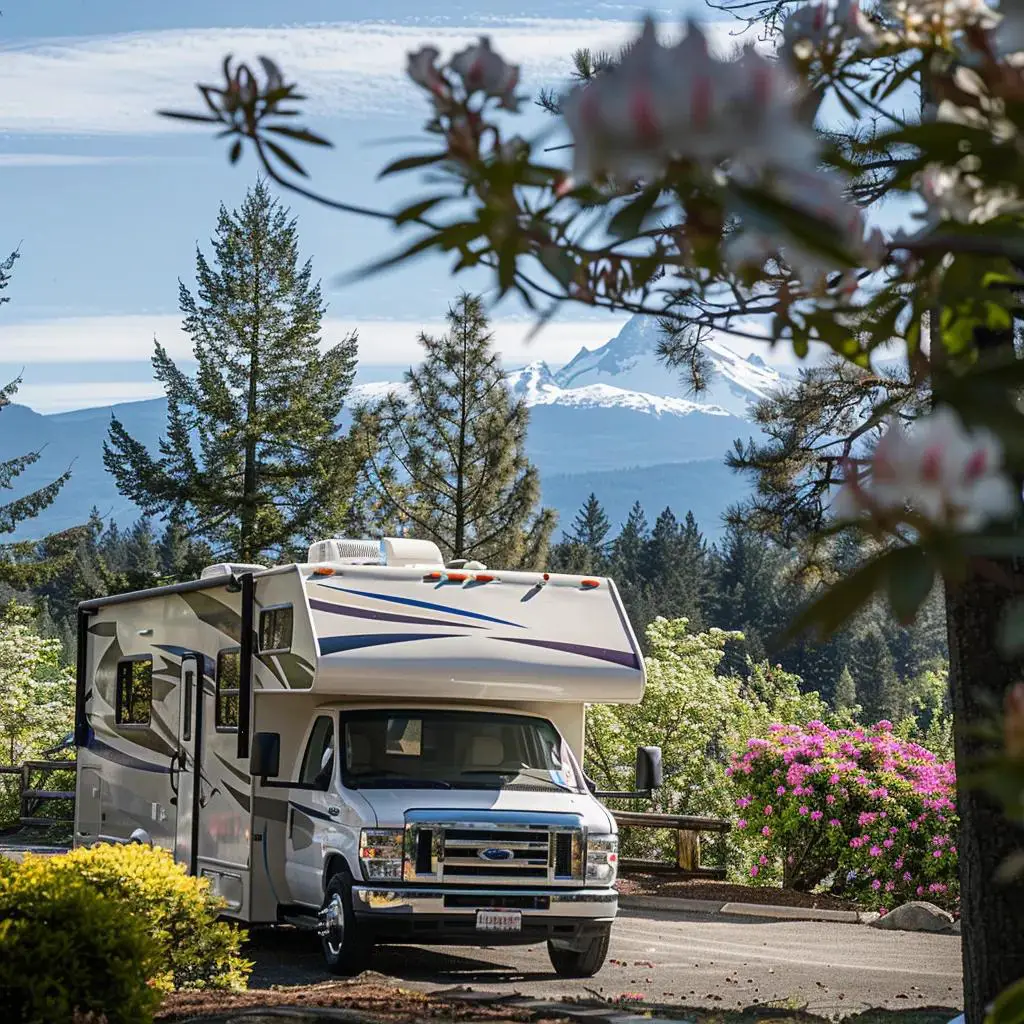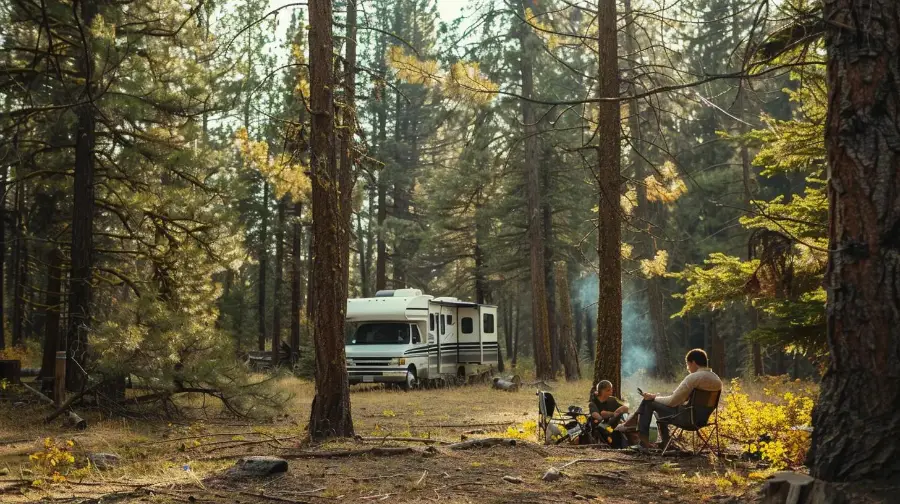What's the Process for the Best Subaru Windshield Replacement: Step-by-Step Guide with Cost, EyeSight Calibration, and Warranty
Replacing a Subaru windshield involves more than swapping glass - it restores structural integrity, maintains advanced driver-assist systems, and secures warranty coverage.
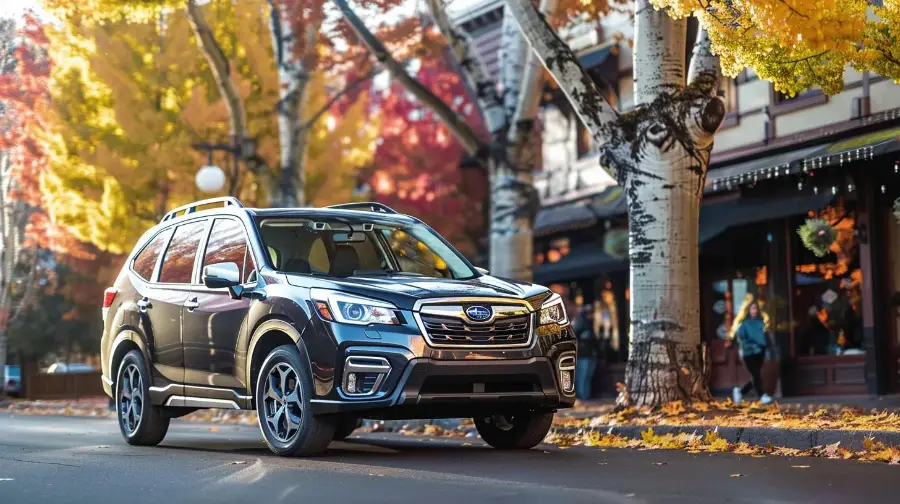
Replacing a Subaru windshield involves more than swapping glass - it restores structural integrity, maintains advanced driver-assist systems, and secures warranty coverage. This guide delivers a clear roadmap through every phase: from initial assessment and safe removal to adhesive curing, EyeSight calibration, cost considerations, warranty insights, service provider selection, and answers to common concerns. Subaru windshield replacement requires precise methods and certified expertise to ensure safety and performance, and this article unpacks each critical step so you know exactly what to expect and why it matters. This article will outline why Oregon Windshields provides the highest quality services for Bend windshield replacement.
What Are the Essential Steps in the Subaru Windshield Replacement Process?
A professional Subaru windshield replacement follows seven core phases to guarantee fit, safety, and ADAS functionality. Each step must be executed with certified tools and OEM-level standards to preserve the vehicle's structural strength and EyeSight accuracy.
- Initial damage assessment and inspection
- Safe removal of the old windshield
- Pinchweld preparation and adhesive application
- Installing the new windshield precisely
- Adhesive curing and bonding verification
- Post-installation quality and safety checks
- EyeSight calibration and system validation
These sequential actions build a reliable foundation for advanced driver-assist technologies and long-term glass integrity, leading directly into the detailed procedures that follow.
How Is the Initial Damage Assessment and Inspection Performed?
The initial assessment defines repair versus replacement by evaluating crack length, impact location, and windshield integrity. Technicians measure damage size against Subaru's safety thresholds, inspect the pinchweld for corrosion, and verify camera alignment zones for EyeSight. A thorough inspection ensures only qualifying replacements proceed, preventing rework and safeguarding driver-assist performance. Precise evaluation at this stage sets the stage for a safe, compliant repair process.
What Is Involved in Removing the Old Windshield Safely?
Safe removal of the damaged windshield begins with protecting interior trim and exterior paint, using specialized shields and tapes. Technicians cut factory urethane with calibrated tools, lift the glass without flexing the frame, and clear residual adhesives. Controlled extraction prevents pinchweld damage and preserves mounting surfaces. Proper removal directly influences fit accuracy and minimizes the risk of leaks or structural compromise.
How Is the Pinchweld Prepared and Adhesive Applied?
Pinchweld preparation involves cleaning, priming, and drying the flange to promote optimal adhesive bonding. Technicians apply a Subaru-approved primer to bare metal, allow flash time for chemical reaction, then dispense high-strength urethane in a precise bead profile. Consistent bead dimensions ensure uniform pressure distribution and gap fill. Proper adhesive application underpins both wind noise prevention and structural rigidity.
The cure kinetics and bond strength of adhesives used in automotive windscreen replacement are paramount for guaranteeing the structural integrity and safety of the vehicle. The adhesive must achieve rapid curing and develop adequate bond strength to resist the stresses experienced by the windscreen during operation and in collision scenarios. Cure kinetics denotes the rate of adhesive hardening, while bond strength refers to the force necessary to fracture the adhesive bond between the windscreen and the vehicle chassis.
What Are the Best Practices for Installing the New Windshield?
Installing the new windshield requires exact positioning using mirror-grade alignment marks and suction-cup lifters. Technicians lower the glass onto the adhesive bead with even pressure, verifying seal continuity around the perimeter. A calibrated seating technique prevents misalignment of EyeSight cameras and maintains aerodynamic contours. Accurate installation supports both safety features and aesthetic factory appearance.
How Long Does Adhesive Curing Take and Why Is It Important?
Adhesive curing times vary by temperature and urethane formulation but typically require one to four hours to reach safe drive-away strength. Curing allows the polymer to cross-link fully, securing glass bonding to chassis metal. Skipping minimum cure time risks seal failure, glass movement, and compromised crash performance. Adhering to the specified curing window ensures the windshield withstands road vibrations and collision forces.
What Post-Installation Checks Ensure Quality and Safety?
Post-installation checks include verifying even bead compression, conducting water-leak tests, and confirming proper door and roof panel gaps. Technicians inspect the adhesive line for continuity and use pressure gauges to detect voids. A final optical inspection of the windshield ensures no distortion affects EyeSight camera calibration. These quality checks validate structural integrity and readiness for ADAS adjustment.
Follow a maintenance program
Ante gravida id aenean quis egestas risus nam amet nullam leo diam diam aliquam eu eu malesuada arcu rhoncus suspendisse nulla mattis ut amet sagittis in justo egestas.

search for a trusted mechanic
Lorem ipsum dolor sit amet, consectetur adipiscing elit lobortis arcu enim urna adipiscing praesent velit viverra sit semper lorem eu cursus vel hendrerit elementum morbi curabitur etiam nibh justo, lorem aliquet donec sed sit mi dignissim at ante massa mattis.
- Neque sodales ut etiam sit amet nisl purus non tellus orci ac auctor
- Adipiscing elit ut aliquam purus sit amet viverra suspendisse potent
- Mauris commodo quis imperdiet massa tincidunt nunc pulvinar
- Excepteur sint occaecat cupidatat non proident sunt in culpa qui officia
Check the air pressure in your tires
Vitae congue eu consequat ac felis placerat vestibulum lectus mauris ultrices cursus sit amet dictum sit amet justo donec enim diam porttitor lacus luctus accumsan tortor posuere praesent tristique magna sit amet purus gravida quis blandit turpis.
Review your suspension frequently
At risus viverra adipiscing at in tellus integer feugiat nisl pretium fusce id velit ut tortor sagittis orci a scelerisque purus semper eget at lectus urna duis convallis. porta nibh venenatis cras sed felis eget neque laoreet suspendisse interdum consectetur libero id faucibus nisl donec pretium vulputate sapien nec sagittis aliquam nunc lobortis mattis aliquam faucibus purus in.
- Neque sodales ut etiam sit amet nisl purus non tellus orci ac auctor
- Adipiscing elit ut aliquam purus sit amet viverra suspendisse potent
- Mauris commodo quis imperdiet massa tincidunt nunc pulvinar
- Excepteur sint occaecat cupidatat non proident sunt in culpa qui officia
Service your vehicle as regularly as posible
At risus viverra adipiscing at in tellus integer feugiat nisl pretium fusce id velit ut tortor sagittis orci a scelerisque purus semper eget at lectus urna duis convallis. porta nibh venenatis cras sed felis eget neque laoreet suspendisse interdum consectetur libero id faucibus nisl donec pretium vulputate sapien nec sagittis aliquam nunc lobortis mattis aliquam faucibus purus in.
“Nisi quis eleifend quam adipiscing vitae aliquet bibendum enim facilisis gravida neque velit euismod in pellentesque”
Conclusion
Eget lorem dolor sed viverra ipsum nunc aliquet bibendum felis donec et odio pellentesque diam volutpat commodo sed egestas aliquam sem fringilla ut morbi tincidunt augue interdum velit euismod eu tincidunt tortor aliquam nulla facilisi aenean sed adipiscing diam donec adipiscing ut lectus arcu bibendum at varius vel pharetra nibh venenatis cras sed felis eget.
Why Is EyeSight Calibration a Critical Final Step?
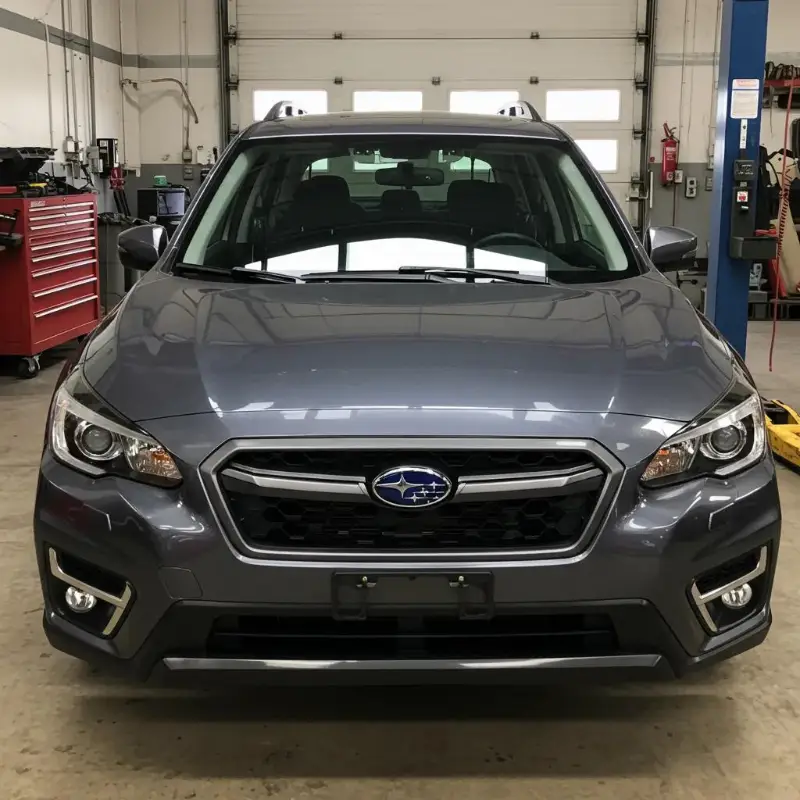
EyeSight calibration aligns Subaru's stereo-camera system to the new windshield's optical plane, restoring lane-keep assist, adaptive cruise control, and pre-collision braking accuracy. Calibration compensates for glass thickness, curvature changes, and camera orientation shifts caused by removal. Proper adjustment prevents false warnings and maintains safety feature reliability, completing the windshield replacement process with full functional restoration.
Why Is Subaru EyeSight Calibration Necessary After Windshield Replacement?
EyeSight calibration restores the precise alignment of stereo cameras that enable Subaru's ADAS features. Without recalibration, lane centering, collision detection, and pedestrian alerts can deliver inaccurate readings due to altered optical geometry. Ensuring calibration adheres to Subaru's technical guidelines protects against sensor drift, enhances road safety, and preserves compliance with manufacturer standards.
What Is Subaru EyeSight Technology and How Does It Work?
Subaru EyeSight employs dual forward-facing cameras mounted at the top of the windshield to create a stereoscopic view of the road. These cameras detect vehicle position, lane markings, and obstacles, triggering adaptive cruise control, automatic braking, and lane-departure warnings. The system relies on unobstructed, distortion-free glass for accurate depth perception and object recognition, making windshield integrity vital for functionality.
How Does Windshield Replacement Affect EyeSight Functionality?
Replacing the windshield alters camera mount points and glass optical properties, shifting focal distance and alignment. Even minor deviations in glass thickness or curvature can cause miscalibration, resulting in false alarms or disabled ADAS features. A new windshield without proper calibration disrupts stereo alignment and compromises the system's ability to judge speed, distance, and lateral position accurately.
What Are the Differences Between Static and Dynamic Calibration?
Static calibration aligns EyeSight cameras against fixed reference targets in a controlled environment, using precise patterns and distances. Dynamic calibration fine-tunes camera orientation through on-road driving maneuvers to validate system performance under real-world conditions. Static adjustment is mandatory for initial alignment, while dynamic validation ensures adaptive functions respond correctly to lane changes and braking events.
What Equipment and Expertise Are Required for Proper Calibration?
Proper EyeSight calibration requires Subaru-approved calibration tables, target boards, precision laser measuring tools, and level flooring. Technicians must complete manufacturer-certified training to interpret diagnostics and adjust camera arrays. This specialized equipment and skill set ensure calibration accuracy within millimeter tolerances, safeguarding ADAS reliability and maintaining warranty compliance.
Follow a maintenance program
Ante gravida id aenean quis egestas risus nam amet nullam leo diam diam aliquam eu eu malesuada arcu rhoncus suspendisse nulla mattis ut amet sagittis in justo egestas.

search for a trusted mechanic
Lorem ipsum dolor sit amet, consectetur adipiscing elit lobortis arcu enim urna adipiscing praesent velit viverra sit semper lorem eu cursus vel hendrerit elementum morbi curabitur etiam nibh justo, lorem aliquet donec sed sit mi dignissim at ante massa mattis.
- Neque sodales ut etiam sit amet nisl purus non tellus orci ac auctor
- Adipiscing elit ut aliquam purus sit amet viverra suspendisse potent
- Mauris commodo quis imperdiet massa tincidunt nunc pulvinar
- Excepteur sint occaecat cupidatat non proident sunt in culpa qui officia
Check the air pressure in your tires
Vitae congue eu consequat ac felis placerat vestibulum lectus mauris ultrices cursus sit amet dictum sit amet justo donec enim diam porttitor lacus luctus accumsan tortor posuere praesent tristique magna sit amet purus gravida quis blandit turpis.
Review your suspension frequently
At risus viverra adipiscing at in tellus integer feugiat nisl pretium fusce id velit ut tortor sagittis orci a scelerisque purus semper eget at lectus urna duis convallis. porta nibh venenatis cras sed felis eget neque laoreet suspendisse interdum consectetur libero id faucibus nisl donec pretium vulputate sapien nec sagittis aliquam nunc lobortis mattis aliquam faucibus purus in.
- Neque sodales ut etiam sit amet nisl purus non tellus orci ac auctor
- Adipiscing elit ut aliquam purus sit amet viverra suspendisse potent
- Mauris commodo quis imperdiet massa tincidunt nunc pulvinar
- Excepteur sint occaecat cupidatat non proident sunt in culpa qui officia
Service your vehicle as regularly as posible
At risus viverra adipiscing at in tellus integer feugiat nisl pretium fusce id velit ut tortor sagittis orci a scelerisque purus semper eget at lectus urna duis convallis. porta nibh venenatis cras sed felis eget neque laoreet suspendisse interdum consectetur libero id faucibus nisl donec pretium vulputate sapien nec sagittis aliquam nunc lobortis mattis aliquam faucibus purus in.
“Nisi quis eleifend quam adipiscing vitae aliquet bibendum enim facilisis gravida neque velit euismod in pellentesque”
Conclusion
Eget lorem dolor sed viverra ipsum nunc aliquet bibendum felis donec et odio pellentesque diam volutpat commodo sed egestas aliquam sem fringilla ut morbi tincidunt augue interdum velit euismod eu tincidunt tortor aliquam nulla facilisi aenean sed adipiscing diam donec adipiscing ut lectus arcu bibendum at varius vel pharetra nibh venenatis cras sed felis eget.
What Are the Risks of Improper or Skipped EyeSight Calibration?
Bypassing EyeSight calibration can lead to undetected obstacles, false collision warnings, and degraded adaptive cruise control performance. In emergencies, misaligned cameras may delay braking or inaccurately identify lane departures, increasing accident risk. From a liability standpoint, uncalibrated ADAS may void manufacturer warranties and conflict with safety regulations, exposing drivers to potential legal and insurance repercussions.
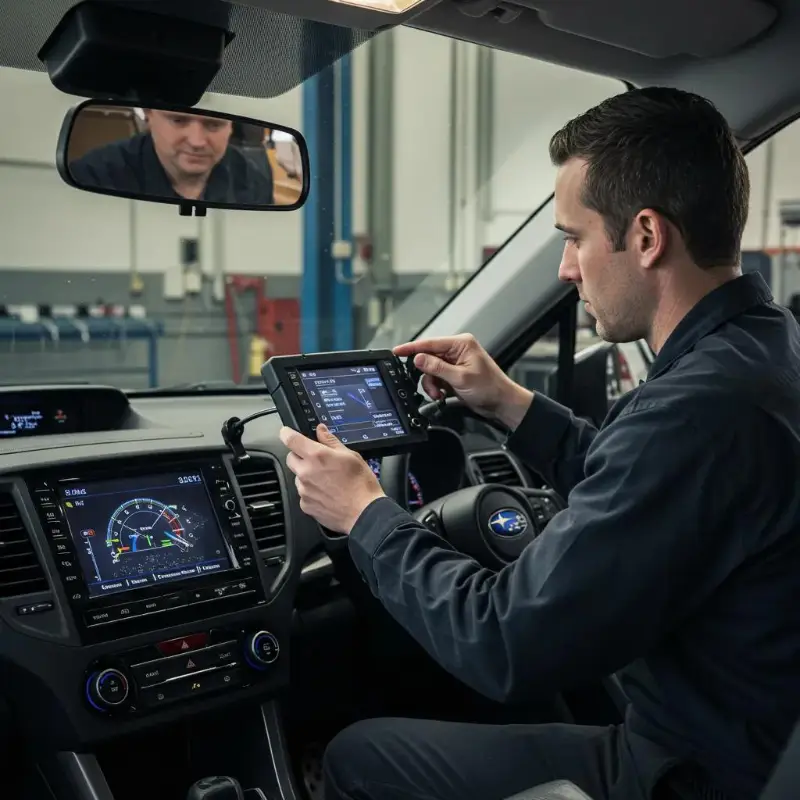
How Do OEM and Aftermarket Subaru Windshields Compare for Replacement?
Choosing between OEM and aftermarket windshield glass affects fit precision, optical clarity, and EyeSight performance. A structured comparison highlights key distinctions across multiple attributes.
What Are the Key Differences Between OEM and Aftermarket Glass?
OEM windshields are produced to Subaru's exact specifications, ensuring consistent thickness, curvature, and refractive index. Aftermarket glass varies by supplier, potentially altering optical properties. Precise optical characteristics in OEM glass support reliable EyeSight readings, whereas inconsistencies in replacement glass may necessitate additional calibration steps and can impact warranty eligibility.
How Does Glass Type Impact EyeSight Accuracy and Safety?
Glass refractive properties and mounting geometry directly influence stereo-camera focus and image processing. OEM glass preserves factory camera calibration parameters, minimizing sensor drift. Aftermarket glass variability can distort lines of sight, triggering false lane-departure alerts or erratic adaptive cruise responses. Reliable EyeSight operation demands uniform optical clarity, making glass choice critical for safety.
What Are the Warranty Implications of Choosing OEM vs. Aftermarket?
Using OEM glass under a Subaru-authorized service retains full vehicle warranty coverage, including ADAS component guarantees. Aftermarket installations may carry only the glass supplier's warranty and exclude manufacturer ADAS warranty. Selecting OEM replacement safeguards comprehensive coverage, while aftermarket options require careful review of glass and service warranties.
How Do Costs Compare Between OEM and Aftermarket Subaru Windshields?
OEM windshields generally cost 20-30 percent more than aftermarket glass due to higher production standards and branding. Aftermarket replacements can reduce upfront expenses by 15-25 percent but may involve additional calibration fees if optical variances occur. Cost-sensitive owners should weigh potential long-term calibration and warranty trade-offs against immediate savings.
What Do Subaru Owners Say About OEM vs. Aftermarket Windshields?
Owners report that OEM glass consistently aligns with EyeSight calibration protocols and exhibits minimal distortion. Aftermarket experiences vary: some drivers find equivalent performance at reduced cost, while others note increased false-alarm rates and minor optical haze. Community feedback emphasizes the importance of certified installation and calibration regardless of glass source.
What Are the Typical Costs and Insurance Coverage for Subaru Windshield Replacement?
Subaru windshield replacement costs depend on model year, EyeSight system presence, glass type, and region. Insurance coverage can offset expenses through comprehensive policies, though deductibles and state regulations influence out-of-pocket amounts. Understanding these financial factors helps owners anticipate charges and streamline claims processing.
How Much Does Subaru Windshield Replacement Cost on Average?
Subaru windshield replacement averages between $450 and $650 for models without EyeSight, rising to $800-$1,100 when including calibration. Premium models with larger glass and sophisticated sensor arrays can exceed $1,200. Regional labor rates and glass availability further influence the final invoice.
How Does EyeSight Calibration Affect the Total Replacement Cost?
EyeSight calibration adds $150-$250 to standard replacement fees, reflecting specialized equipment and training requirements. Calibration charges depend on whether static, dynamic, or both procedures are performed. In some states, calibration costs are covered under glass warranties or insurance policies, reducing out-of-pocket impact.
Does Comprehensive Insurance Cover Subaru Windshield Replacement?
Most comprehensive auto insurance policies cover windshield repair or replacement with zero deductible in states mandating glass coverage. Policies vary: some include OEM glass only if specified, while others allow aftermarket options. Verifying policy details and glass coverage clauses ensures clarity before scheduling service.
What Are Deductibles and How Do They Vary by State?
Deductibles represent the owner's share of claim costs, typically ranging from $0 to $500. States like California and Florida often require zero-deductible glass coverage under comprehensive policies. Other states permit insurers to impose standard deductibles, making it essential to review local regulations and policy endorsements for glass claims.
How Can You File an Insurance Claim for Subaru Windshield Replacement?
Filing a claim begins with contacting your insurer's glass division or claims department, providing vehicle information, damage details, and preferred service provider. Insurers may direct you to approved shops or allow you to choose an independent auto glass technician. Clear documentation and pre-approval help expedite coverage for both windshield and calibration services.
What Should Subaru Owners Know About Windshield Warranty and Class-Action Settlements?
Recent class-action settlements have extended warranty coverage for certain Subaru models experiencing premature windshield cracking. Understanding eligibility, covered models, and reimbursement procedures empowers owners to secure repair support without unexpected costs.
What Is the Subaru Cracked Windshield Class-Action Lawsuit About?
The class-action lawsuit addressed alleged manufacturing flaws causing windshields on select Subaru vehicles to crack more frequently than industry norms. Plaintiffs secured an extended warranty program covering repairs for qualifying cracks through specified years and mileage limits, reinforcing owner confidence in factory glass integrity.
Which Subaru Models and Years Are Eligible for Extended Warranty Coverage?
Eligible models include 2019-2022 Ascent, Forester, and 2020-2022 Legacy and Outback vehicles. Coverage applies to original windshields exhibiting non-impact cracks under five inches within the extended warranty period. Verifying vehicle identification and build dates confirms owner entitlement to complimentary repairs.
How Does the Extended Warranty Protect Against Windshield Fragility?
The extended warranty covers replacement of factory windshields experiencing spontaneous or environmental cracking, waiving labor and glass costs within terms. Owners receive authorized service benefits and certified calibration at no additional charge, ensuring seamless restoration of glass and ADAS features.
How Can Owners File for Reimbursement or Warranty Claims?
Owners should submit proof of model eligibility, repair invoices, and a warranty claim form to Subaru's customer care center. Authorization numbers expedite service at participating dealerships or certified glass shops. Timely submission within the warranty window avoids denial and secures full reimbursement for covered repairs.
What Are Common Issues and Concerns Related to Subaru Windshield Fragility?
Drivers report star breaks and edge cracks in mild temperature fluctuations or road debris events. Concerns include water infiltration at pinchwelds and increased false-alarm rates in EyeSight warnings. Proper replacement with factory-grade glass and calibration resolves fragility issues and restores system reliability.
How Do You Choose the Best Subaru Auto Glass Service Provider?
Selecting a certified provider ensures precise installation, genuine parts, and accurate ADAS calibration. Providers with Subaru training and I-CAR accreditation deliver consistent quality and uphold manufacturer standards, safeguarding safety and warranty coverage.
What Are the Benefits of Using Certified Subaru Auto Glass Technicians?
Certified technicians receive manufacturer training on Subaru's installation tolerances, calibration procedures, and repair standards. They use approved tools, follow factory repair manuals, and document service steps to maintain warranty compliance. Certification reduces error rates and enhances long-term system reliability.
Should You Choose a Dealership or an Independent Auto Glass Shop?
Dealerships offer direct factory support, OEM part access, and integrated warranty management, often at premium cost. Independent shops can provide competitive pricing, faster scheduling, and mobile service options but must demonstrate Subaru-certified technicians and ADAS expertise. Balancing cost and certification credentials guides provider selection.
Why Is ADAS and EyeSight Calibration Certification Essential?
Calibration certification ensures technicians understand both static and dynamic procedures, aligning stereo cameras to Subaru's optical specifications. Certified calibration respects millimeter-level tolerances, reduces false alarms, and maintains adaptive safety features. Uncertified calibration risks system errors and potential warranty conflicts.
What Questions Should You Ask Your Auto Glass Service Provider?
Before scheduling service, confirm technician certifications, glass source (OEM vs. aftermarket), calibration equipment details, warranty terms on glass and workmanship, and estimated cure times. Request documentation of calibration results and ask about insurance claim assistance. These questions reveal provider competency and protect your investment.
How Do Warranties on Workmanship and Glass Affect Your Choice?
Comprehensive warranties cover glass defects, adhesive adhesion, and calibration accuracy for specified durations or mileage. Glass warranties often range from one year to lifetime coverage, while workmanship assurances protect against leaks and seal failures. Robust warranty packages signal provider confidence and commitment to quality.
What Are the Most Common Questions About Subaru Windshield Replacement?
Subaru owners frequently ask about timeframes, calibration needs, glass choices, insurance impacts, and care practices. Clear answers help set realistic expectations and maintain windshield longevity.
How Long Does It Take to Replace a Subaru Windshield?
A standard windshield replacement without EyeSight calibration can be completed in one to two hours. Including static and dynamic calibration extends the job by an additional one to two hours, depending on ambient conditions and technician workflow. Total time on-site typically ranges from two to four hours.
Is EyeSight Calibration Always Required After Replacement?
Yes, Subaru requires EyeSight calibration after windshield replacement to restore ADAS accuracy. Even if structural cameras appear aligned, calibration verifies precise optical orientation and sensor functionality, preventing false warnings and ensuring full safety feature operation.
Can I Use Aftermarket Glass Without Affecting My Subaru's Safety Features?
Aftermarket glass can be used if it meets Subaru's optical specifications and is installed by certified technicians. However, variable refractive properties may necessitate additional calibration steps. Genuine OEM glass provides the highest assurance of compatibility and consistent ADAS performance.
Will My Insurance Premium Increase After a Windshield Claim?
Most comprehensive glass claims do not impact premiums, especially in states with zero-deductible glass coverage laws. Filing multiple claims within a short period may trigger rate adjustments, but a single windshield repair typically does not affect insurance costs.
How Do I Maintain My New Subaru Windshield for Longevity?
Maintain windshield longevity by avoiding sudden temperature changes, promptly repairing minor chips, and using gentle glass cleaners. Park in shaded areas to minimize thermal stress and inspect seals periodically for wear. Consistent care preserves glass integrity and reduces the risk of future damage.
Replacing a Subaru windshield correctly restores structural safety, ensures EyeSight reliability, and maintains factory warranty terms. By understanding each step - from damage assessment and safe removal through OEM vs. aftermarket decisions, insurance navigation, and certified calibration - you can make informed choices that protect your vehicle and peace of mind. Choose a provider with Subaru certification, verify calibration procedures, and follow care guidelines to enjoy clear visibility and dependable driver-assist performance for years to come.
Follow a maintenance program
Ante gravida id aenean quis egestas risus nam amet nullam leo diam diam aliquam eu eu malesuada arcu rhoncus suspendisse nulla mattis ut amet sagittis in justo egestas.

search for a trusted mechanic
Lorem ipsum dolor sit amet, consectetur adipiscing elit lobortis arcu enim urna adipiscing praesent velit viverra sit semper lorem eu cursus vel hendrerit elementum morbi curabitur etiam nibh justo, lorem aliquet donec sed sit mi dignissim at ante massa mattis.
- Neque sodales ut etiam sit amet nisl purus non tellus orci ac auctor
- Adipiscing elit ut aliquam purus sit amet viverra suspendisse potent
- Mauris commodo quis imperdiet massa tincidunt nunc pulvinar
- Excepteur sint occaecat cupidatat non proident sunt in culpa qui officia
Check the air pressure in your tires
Vitae congue eu consequat ac felis placerat vestibulum lectus mauris ultrices cursus sit amet dictum sit amet justo donec enim diam porttitor lacus luctus accumsan tortor posuere praesent tristique magna sit amet purus gravida quis blandit turpis.
Review your suspension frequently
At risus viverra adipiscing at in tellus integer feugiat nisl pretium fusce id velit ut tortor sagittis orci a scelerisque purus semper eget at lectus urna duis convallis. porta nibh venenatis cras sed felis eget neque laoreet suspendisse interdum consectetur libero id faucibus nisl donec pretium vulputate sapien nec sagittis aliquam nunc lobortis mattis aliquam faucibus purus in.
- Neque sodales ut etiam sit amet nisl purus non tellus orci ac auctor
- Adipiscing elit ut aliquam purus sit amet viverra suspendisse potent
- Mauris commodo quis imperdiet massa tincidunt nunc pulvinar
- Excepteur sint occaecat cupidatat non proident sunt in culpa qui officia
Service your vehicle as regularly as posible
At risus viverra adipiscing at in tellus integer feugiat nisl pretium fusce id velit ut tortor sagittis orci a scelerisque purus semper eget at lectus urna duis convallis. porta nibh venenatis cras sed felis eget neque laoreet suspendisse interdum consectetur libero id faucibus nisl donec pretium vulputate sapien nec sagittis aliquam nunc lobortis mattis aliquam faucibus purus in.
“Nisi quis eleifend quam adipiscing vitae aliquet bibendum enim facilisis gravida neque velit euismod in pellentesque”
Conclusion
Eget lorem dolor sed viverra ipsum nunc aliquet bibendum felis donec et odio pellentesque diam volutpat commodo sed egestas aliquam sem fringilla ut morbi tincidunt augue interdum velit euismod eu tincidunt tortor aliquam nulla facilisi aenean sed adipiscing diam donec adipiscing ut lectus arcu bibendum at varius vel pharetra nibh venenatis cras sed felis eget.


